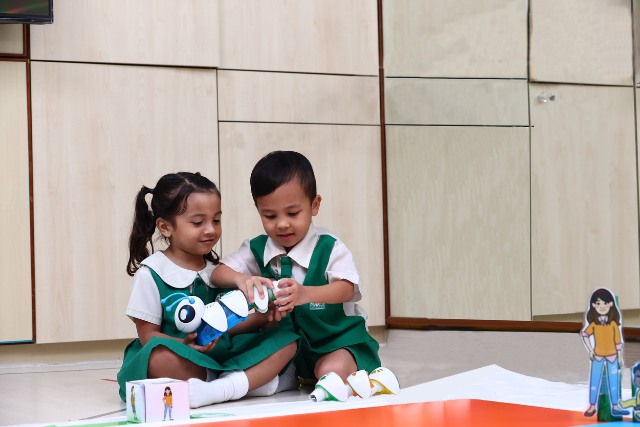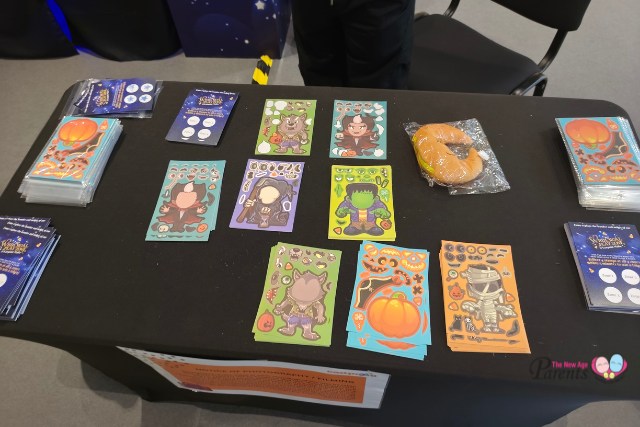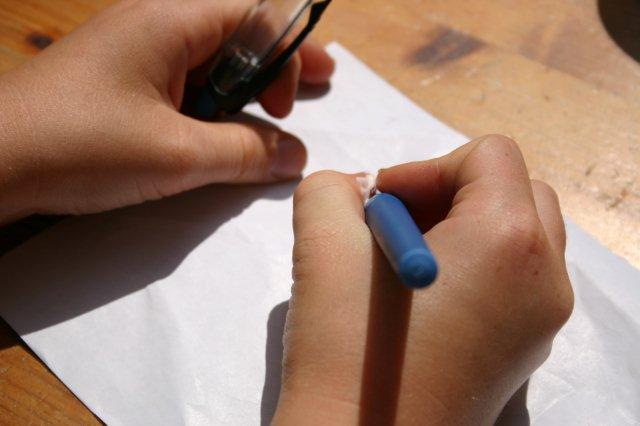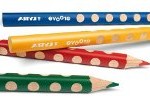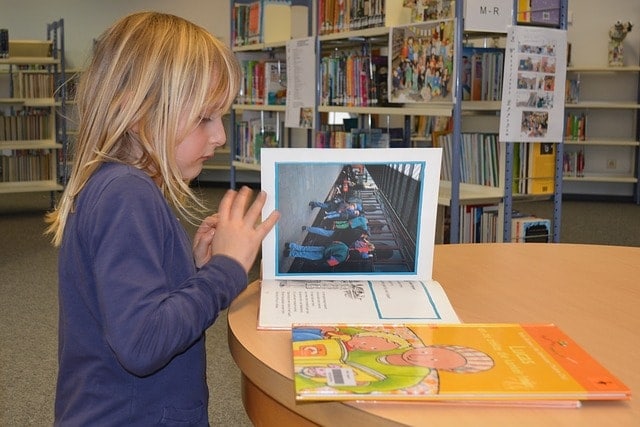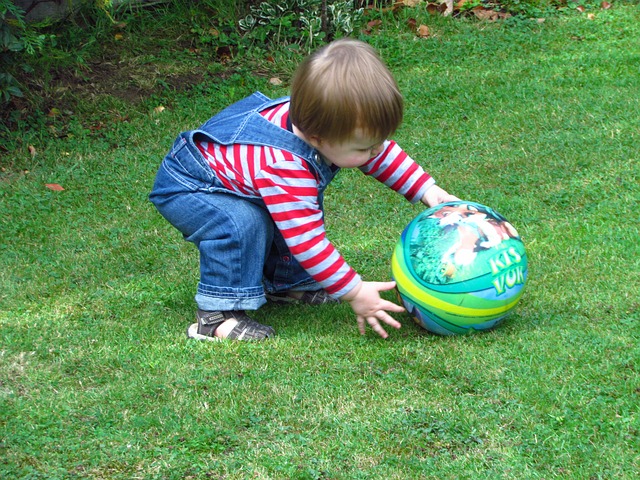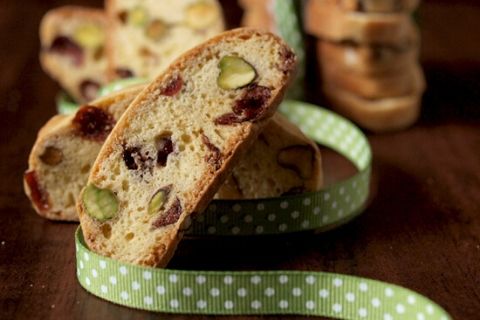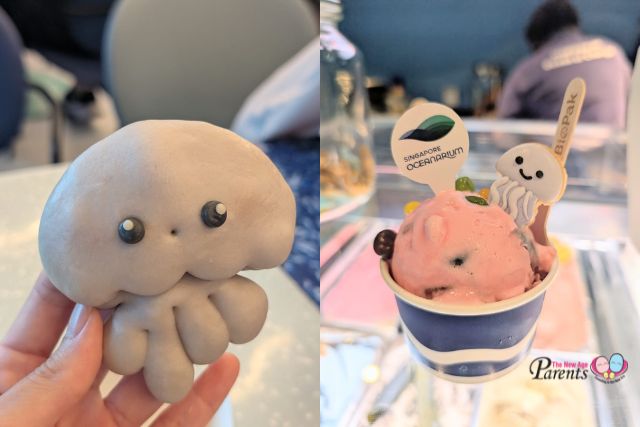Do you notice your child struggling when it comes to writing? Have you ever thought they may take such a long time in doing so, or why their handwriting is not as tidy as it could be?
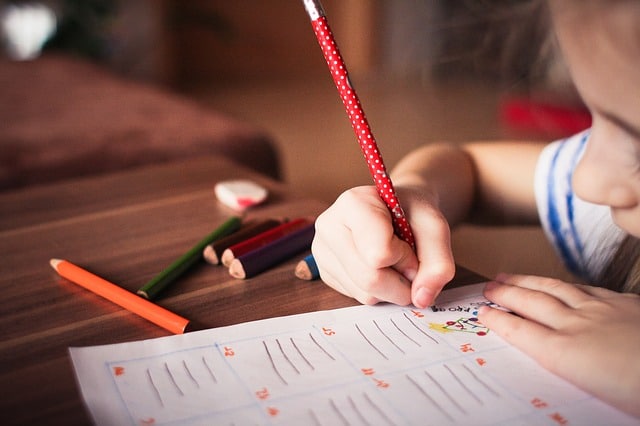
When children are not exposed to gross motor movement and coordination activities, their fine motor skills are affected as well. Gross motor activities enable children to activate their whole body including their kinetic senses. When this happens, children make connections and learn more effectively. It also translates into their fine motor skills.
Before exercising, we stretch our bodies to warm up. These stretches include big movements to stimulate the flow of blood in our bodies before doing any strenuous activity. Similarly, before children do any fine motor activity, it is important that they have had prior exposure to gross motor movements to stimulate themselves.
From Big To Small
Before a child can concentrate their drawing or writing on a small space, they need to be able to explore what is around them. A big part of motor coordination is spatial awareness, where one needs to be aware of her of his surroundings. Children need the opportunity to create big strokes with a pencil so as to enhance their ability to focus on the smaller strokes later on.
To teach children writing, the Orton Gillingham approach in reading and writing, used by the Dyslexia Association of Singapore, encourages teachers to introduce writing to children by letting them trace letters in the air using their entire arm, instead of just their fingers. Children begin by using big movements to learn something before doing it in small movements. This way, children get exposure to how letters are written and, more importantly, it aids children in using their fingers to control the pencil when writing.
Instead of starting your child off by forcing them to hold a pencil and write, do activities with them to get their muscles ready for it. Some activities include:
- Squishing soft toys – to prepare finger muscles
- Painting on majong paper – to enhance spatial awareness and muscle coordination in the arm
- Throwing balls – to promote hand eye coordination
- Running, skipping, climbing – for stamina
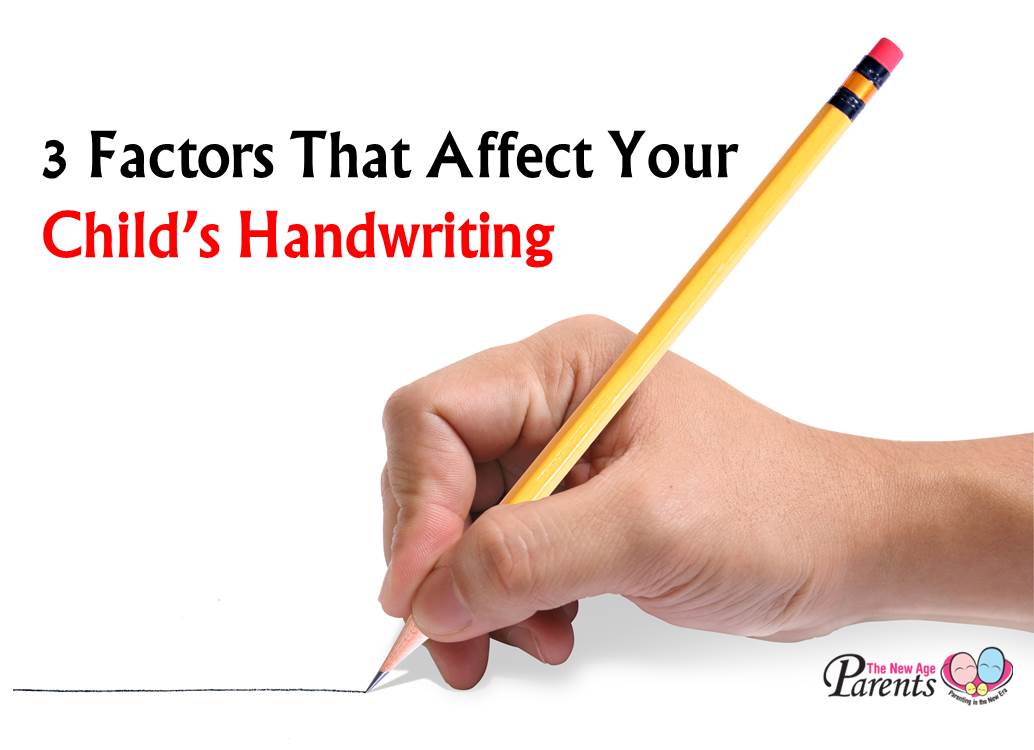
It is important for parents to understand that handwriting is a complex activity that requires both physical and cognitive processes. Children who have poor handwriting skills are sometimes mistakenly viewed as being lazy or uninterested. The truth is that there are underlying factors that affect a child who is experiencing handwriting difficulty.
Three common factors are: 1) sitting position, 2) poor fine motor skills, and 3) sensory issues.
When a child does not have a correct sitting position, it would affect the movement of her arms and hands in handwriting. Hence, poor quality may result which can be frustrating for the child and parents.
Good fine motor skills are essential for handwriting development. A child should develop good grip and pinch strength to hold the pencil properly. A mature way to hold the pencil is by using the tripod grasp (thumb, index and middle finger). The bilateral coordination or the use of both hands should also be developed for activity such as stabilizing the paper with one hand while the other hand is writing. Hand-eye coordination is needed especially when copying from the board or another paper.
 One of the sensory issues that affects handwriting is tactile defensiveness or hypersensitive to touch. This may result in the child’s reluctance to hold her pencil. This negative reaction is likely to result in poor handwriting quality. Another issue could be due to poor proprioception or difficulty perceiving the position of parts of the body. It explains why some children write lightly on paper, while others write with too much pressure. Sometimes, a child with this problem may rip the paper when writing with a pencil.
One of the sensory issues that affects handwriting is tactile defensiveness or hypersensitive to touch. This may result in the child’s reluctance to hold her pencil. This negative reaction is likely to result in poor handwriting quality. Another issue could be due to poor proprioception or difficulty perceiving the position of parts of the body. It explains why some children write lightly on paper, while others write with too much pressure. Sometimes, a child with this problem may rip the paper when writing with a pencil.
It’s important to determine the cause of the problem and provide immediate solutions for them. Teaching your child as early as possible may give her the opportunity to reach a higher potential in school. As parents, there are steps you can follow to help support your child in developing better handwriting skills.
Here are some useful techniques:
1. Teach your child the proper sitting position
Your child’s quality of handwriting can be influenced by the position of her body in relation to her chair and desk. Parents can help to support proper writing posture for their child by following a few easy tips:
- When your child sits back in her chair
- Her feet should be flat on the floor.
- Ankles should be at least 90 degree angle when touching the ground. If her feet do not touch the ground, place a footstool or books under her feet.
- The upper legs should be parallel to the floor which gives the hips and knees a 90 degree angle.
- She should have a space between herself and the edge of the desk that is about the length of her fist.
- If her knees touch the bottom of the desk, the height of the table should be adjusted higher, or switch to a higher desk.
- Her elbows should be bent a few inches below armpit height when placing her arms on the desk. If the elbows are parallel to the armpit height or above, the desk is too high and needs adjustment, or switch to another desk.
2. Be involved in writing tasks
It is very important that parents be involved in their child’s homework. The child needs to feel the support and guidance from her parents especially for those who have more difficulties with school work. Parents can help by demonstrating how to hold the pencil or by providing hand-over-hand assistance. Your child will gain confidence in her writing with your proper guidance. Practice should be an everyday affair, administered in short tasks for better results. It is important to focus on one objective at a time such as a particular letter, spacing, alignment, and size.
Always encourage your child to hold the pencil in a correct pencil grip. Tripod position or “three-jaw-chuck” is the best pencil grasp for handwriting. If your child cannot assume and maintain this position, a modification can be done such as attaching pencil grips. Paper should be at a slight slant and if necessary over the mid-line of the body. Give your child praises and encouragement for letters or words that are written well.
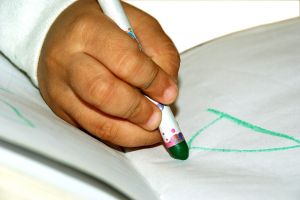
3. Provide fine motor activities at home
Parents can also provide different types of fine motor activities depending on the availability of resources. Here are samples of activities that can be done at home:
- Use fingers to pick up and put small objects such as marbles, beans or coins in containers
- Use clothes pegs to hang cards or small clothes
- Use tweezers or chopsticks to pick up rings, cotton balls, or any small objects
- Form letters using clay or dough
- Lace beads
- Join Lego or blocks
- Tear or crumple paper
- Cut with scissors (strips or shapes)
- Write on a paper with two lines or 3 lines for more advanced handwriting
➡️ Related Read: Art and Craft Activity: Fun with ABCs
4. Seek professional support
Many children are now referred to Occupational Therapists because of poor fine motor skills development. Teachers and parents sometimes report that their child has poor handwriting quality and takes a long period of time to complete their school work. When parents bring their child to therapy centres, Occupational Therapists will conduct assessments to determine underlying problems, formulate a plan, and provide intervention.
Interventions may include sensory stimulation, postural control and alignment, proprioceptive inputs on both hands, and fine motor activities. They also provide parents support through consultation and home instruction programme. Parents can then implement the activities at home to achieve better results. Furthermore, parents can benefit from workshops and hands-on activities so they can experience and explore how to best teach their children.
This article is brought to you by the team of speech-language therapists and occupational therapist from The Children’s Therapy Centre. They work with children of all ages with communication, motor or attention difficulties.
Additional text by Bianca Tan, edited by Michelle Ang.
* * * * *
Like what you see here? Get parenting tips and stories straight to your inbox! Join our mailing list here.
Want to be heard 👂 and seen 👀 by over 100,000 parents in Singapore? We can help! Leave your contact here and we’ll be in touch.













